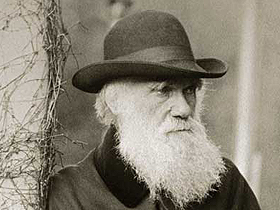In this book, published in 1871, Charles Darwin suggested that apes and human beings shared a common ancestor and that the two species had gradually diverged under the effect of environmental conditions. At the same time, Darwin also made a number of inferences regarding “the evident inequality between human races”.124
According to the views that Darwin stated in his book, human races represented different stages of evolution, and some races had evolved and progressed further than others. Some were still more or less at the level of apes. In his book Darwin maintain that these inferior races should be eliminated. And that there was no need for developed human beings to strive to maintain them and protect them. He compared this situation with that of livestock breeders:
With savages, the weak in body or mind are soon eliminated; and those that survive commonly exhibit a vigorous state of health. We civilised men, on the other hand, do our utmost to check the process of elimination; we build asylums for the imbecile, the maimed, and the sick; we institute poor-laws; and our medical men exert their utmost skill to save the life of every one to the last moment. . . . Thus the weak members of civilised societies propagate their kind. No one who has attended to the breeding of domestic animals will doubt that this must be highly injurious to the race of man. 125
In his book, Darwin ascribed the same status to Negroes, native Australians, and gorillas after which he predicted that these would gradually be eliminated by “civilised races”:
At some future period, not very distant as measured by centuries, the civilised races of man will almost certainly exterminate, and replace the savage races throughout the world. At the same time the anthropomorphous apes . . . will no doubt be exterminated. The break between man and his nearest allies will then be wider, for it will intervene between man in a more civilised state, as we may hope, even than the Caucasian, and some ape as low as a baboon, instead of as now between the negro or Australian and the gorilla.126
Ever since Darwinism was first put forward, it has represented the main supposedly scientific basis for racism. Darwinism, which assumes that living things evolve through a fight for survival, was applied to entire societies, the result being the scientific movement known as Social Darwinism. (See Social Darwinism.) According to Darwin, the duty of “civilised” individuals was to accelerate this evolutionary process and to ensure the elimination of backward races that were, in any case, condemned to disappear. (See Darwinism and Racism.)
Indeed, the racist and discriminatory practices we still encounter today draw support from ideas supposedly legitimized in this way by Darwinism.
124 Stephen Jay Gould, The Mismeasure of Man, New York: W.W. Norton and Company, 1981, p. 72.
125 Charles Darwin, The Descent of Man, p. 171.
126 Ibid., p. 178.


